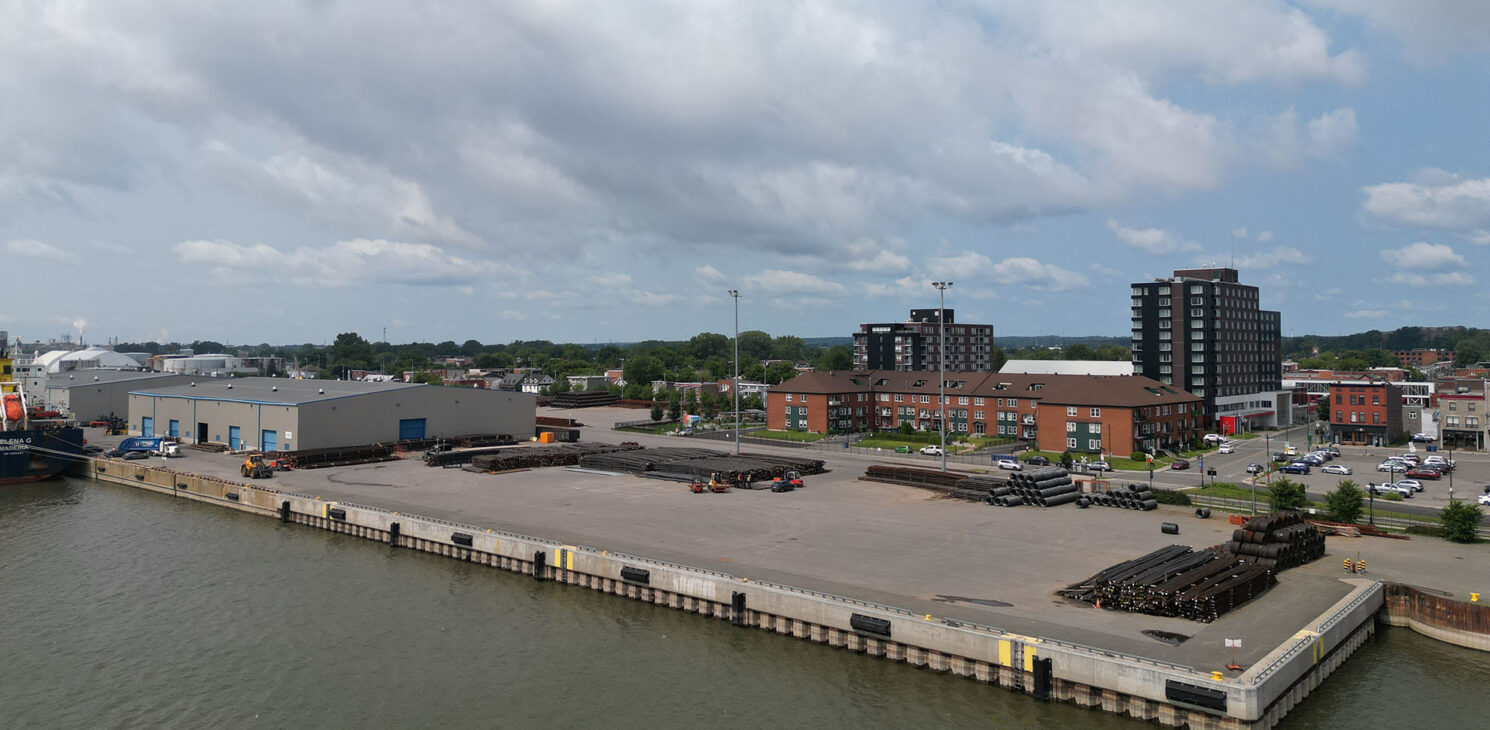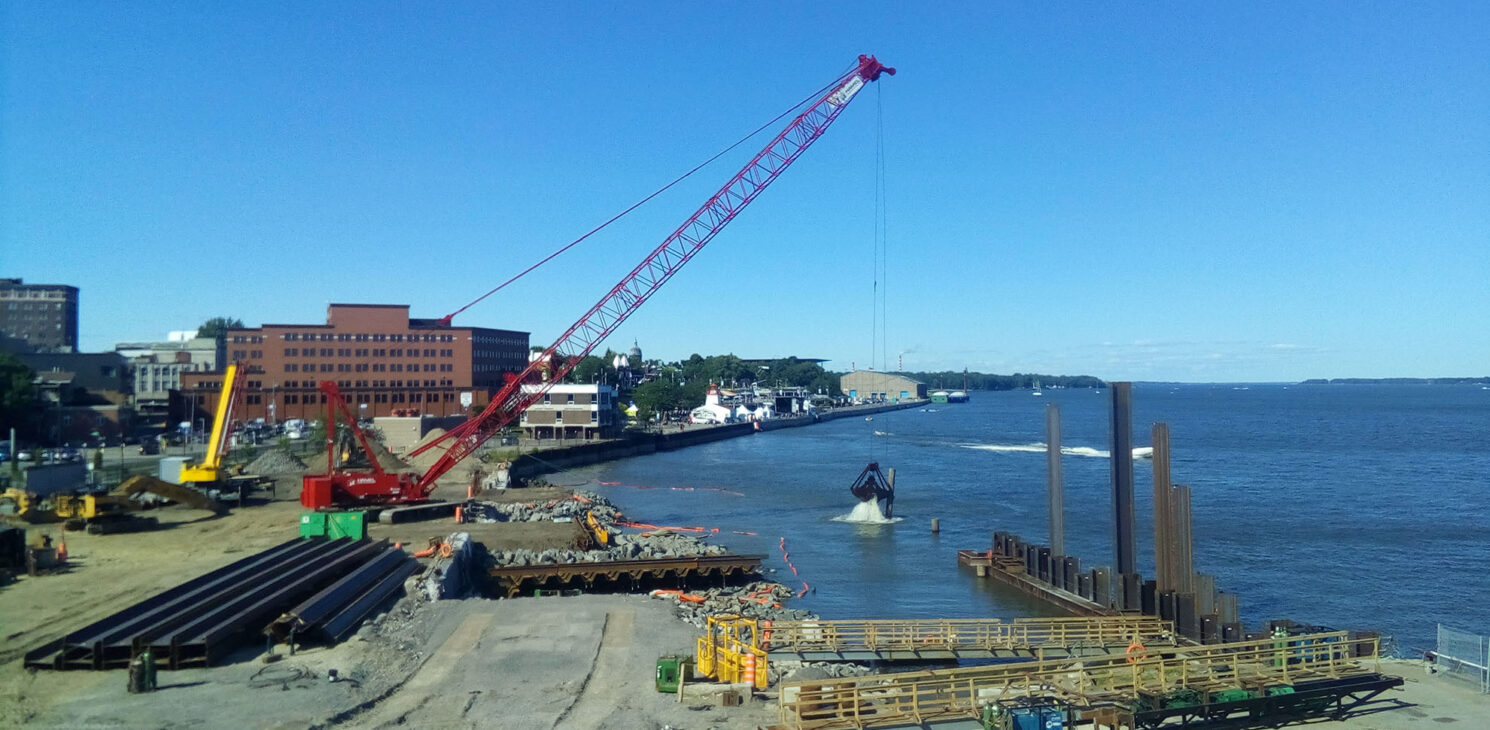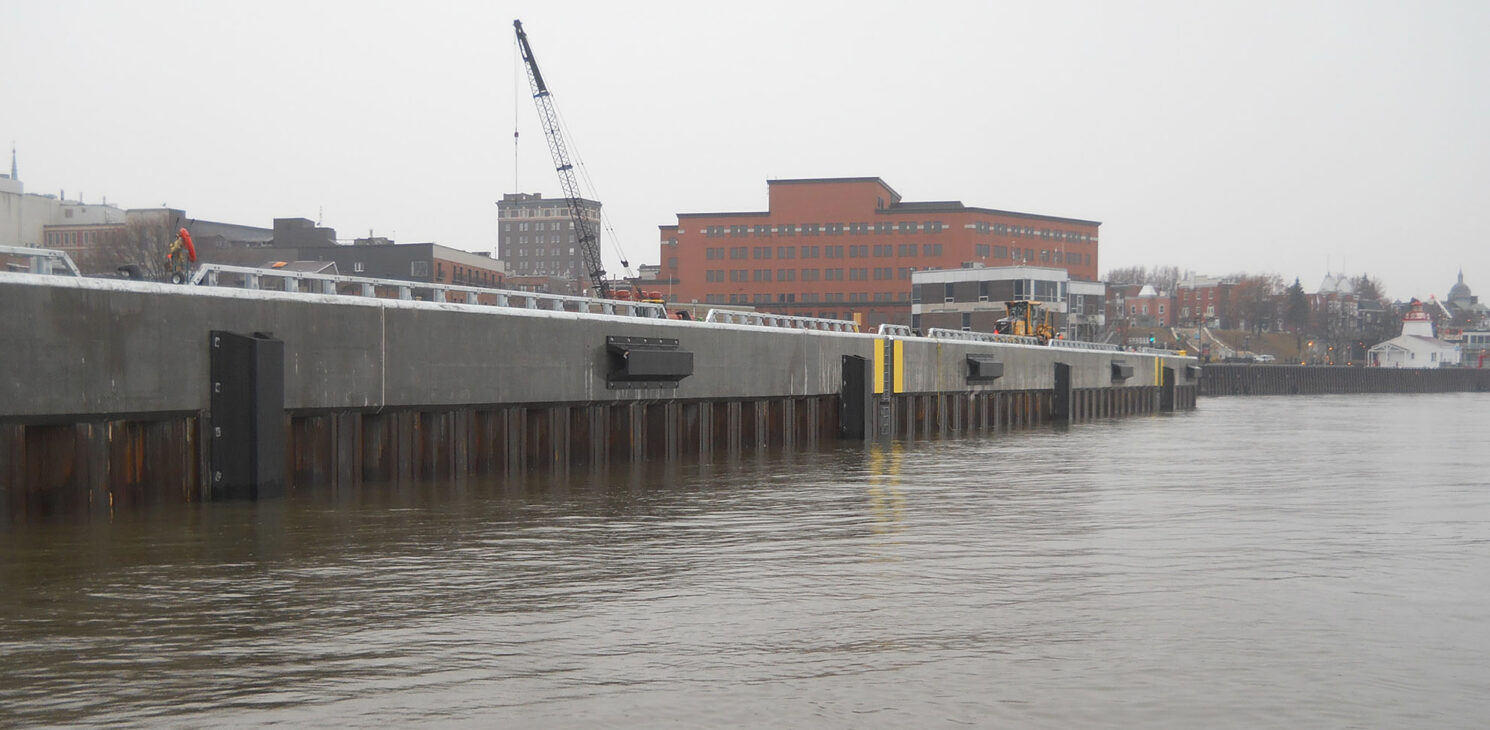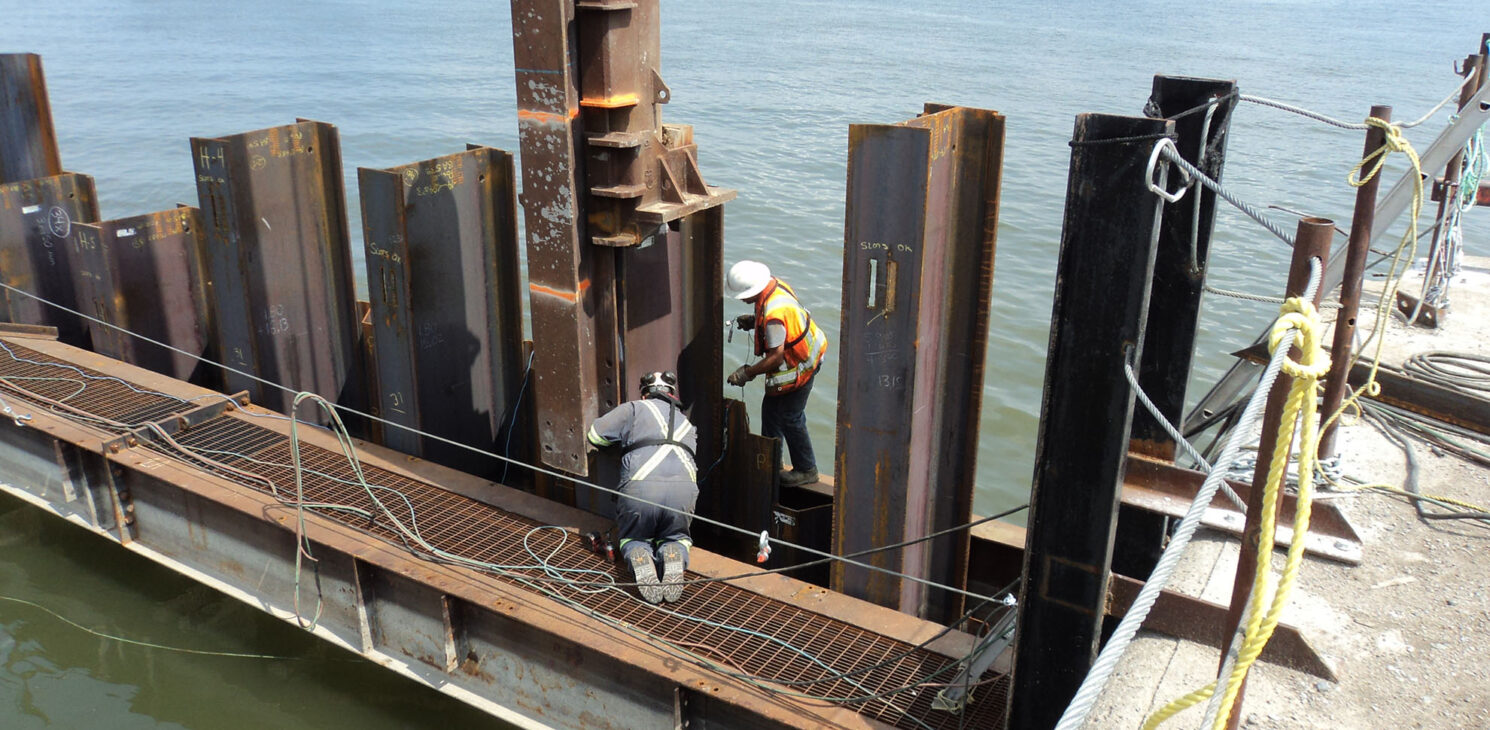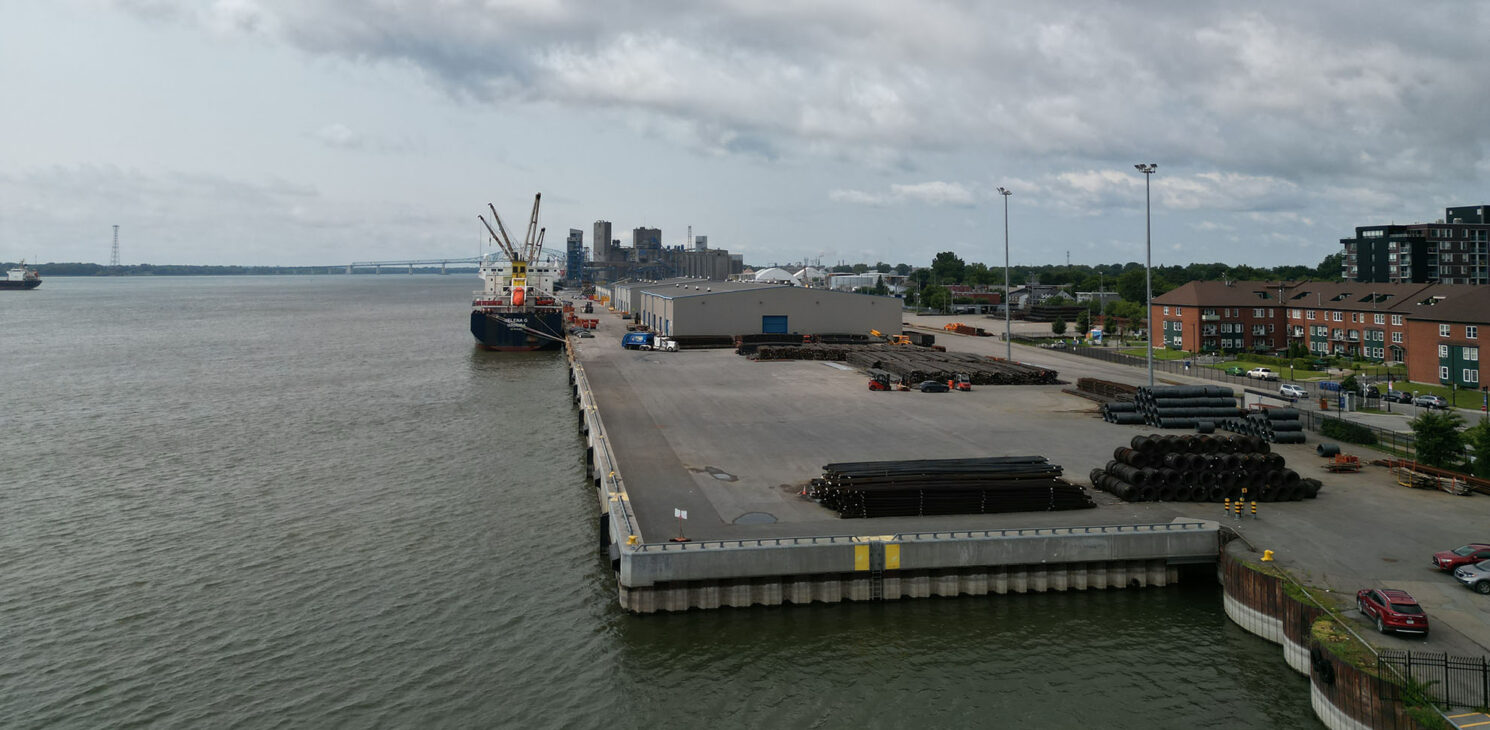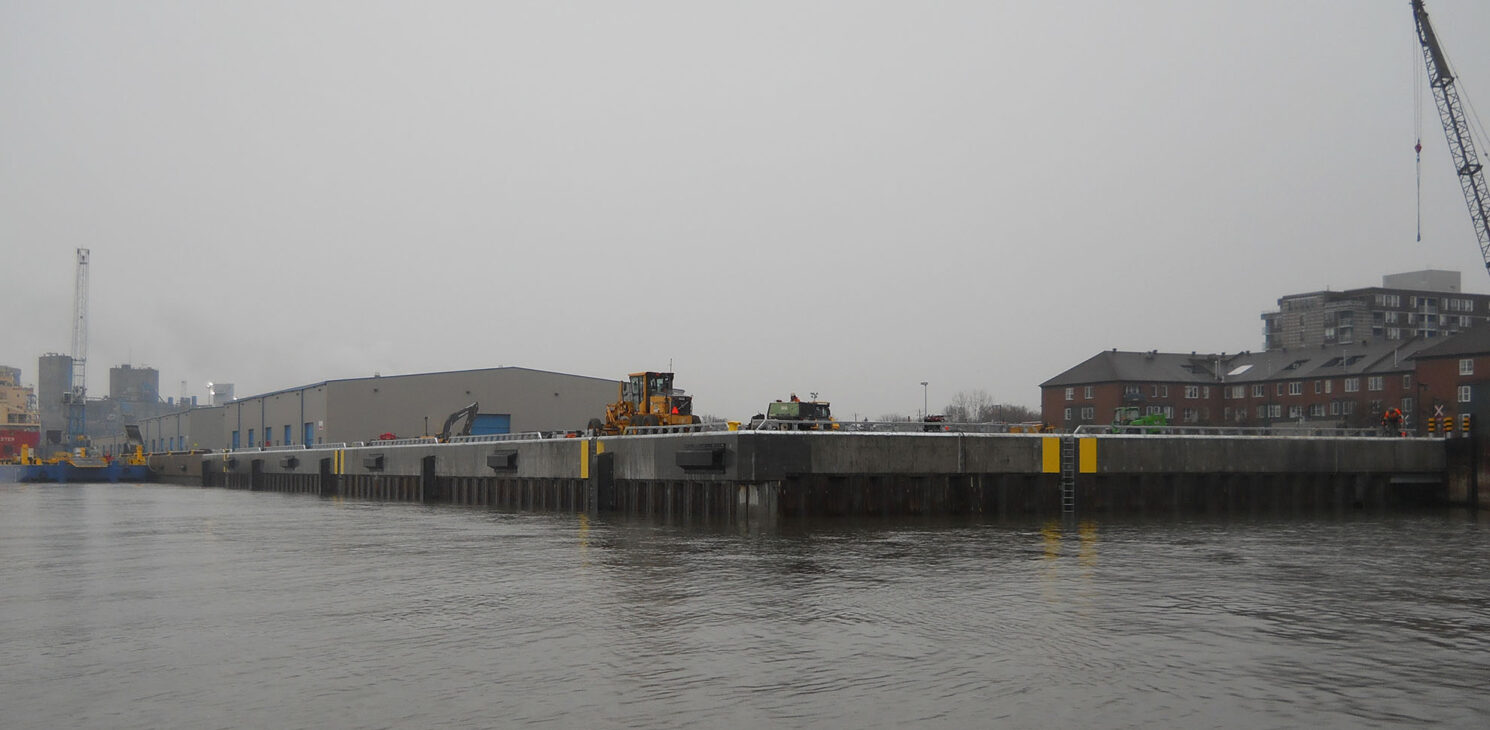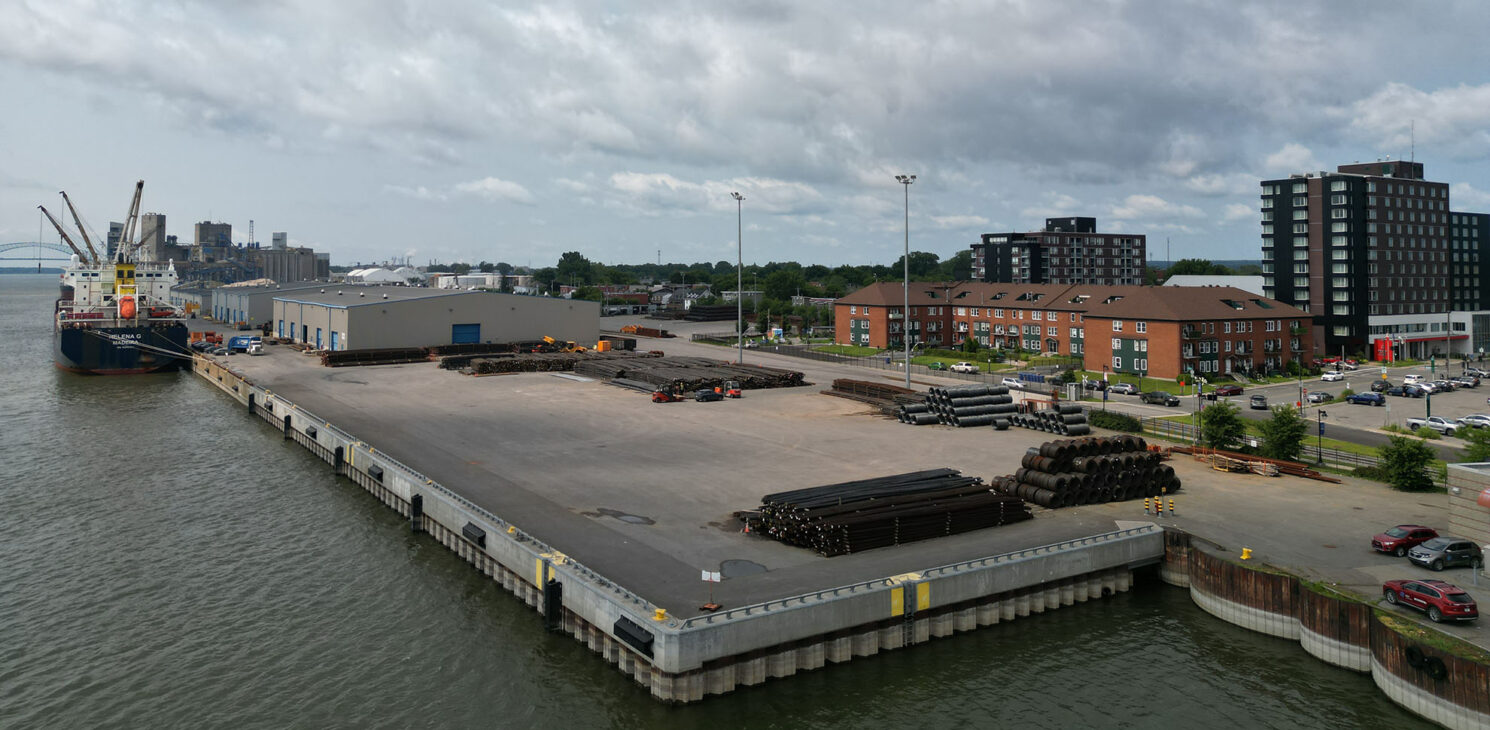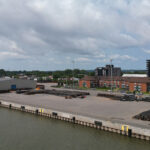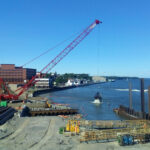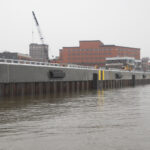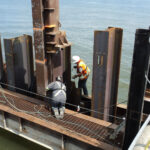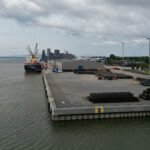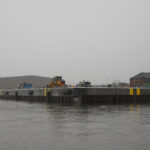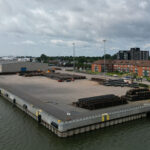The project involved the demolition of some of the existing port infrastructure assets and the construction of a 4,450 m2 extension of Dock 10 and a new terminal with a total surface area of 12,000 m2.
The new dock was built using a combined structural system of pile planks and steel bearing piles with tie beams and butt stops, the ends of which are connected to the existing dock, and a new reinforced concrete coping wall atop the pile plank wall. New mooring bollards and boarding fenders were installed.
The expansion of the dock terminal involved a range of construction work: dismantling and reconstruction of a section of the rail line running through the sector affected by the demolition; excavation and filling work, including management and disposal of contaminated excavation materials; installation of two rainwater drainage systems with two hydrodynamic separators; relocation of the water supply system and addition of fire hydrants; high mast lighting and a new underground electrical network; and reconfiguration of the telecommunication circuits.
Improvements to the urban environment
The aesthetics of the new terminal were an extremely important consideration because of the neighbouring urban community. The design studies directed the team’s designers toward selections that provide a pleasant and inviting environment along the shores of the St. Lawrence River.
Innovative solution
The main challenge related to this project was a geotechnical one arising from the presence of a layer of loose sediment measuring between 5 and 12 metres thick on the sea floor within the sector where the expansion work was taking place. Restrictions related to compaction, the load bearing capacity required at the dock surface and the very tight deadlines for completing the work presented a difficult challenge for the designers.
Working in collaboration with the laboratory, the team was able to develop a backfilling method for the dock involving the installation of specific materials without the need to remove the layer of loose sediment on the sea floor, which resulted in significant cost savings and allowed the deadlines to be met.
